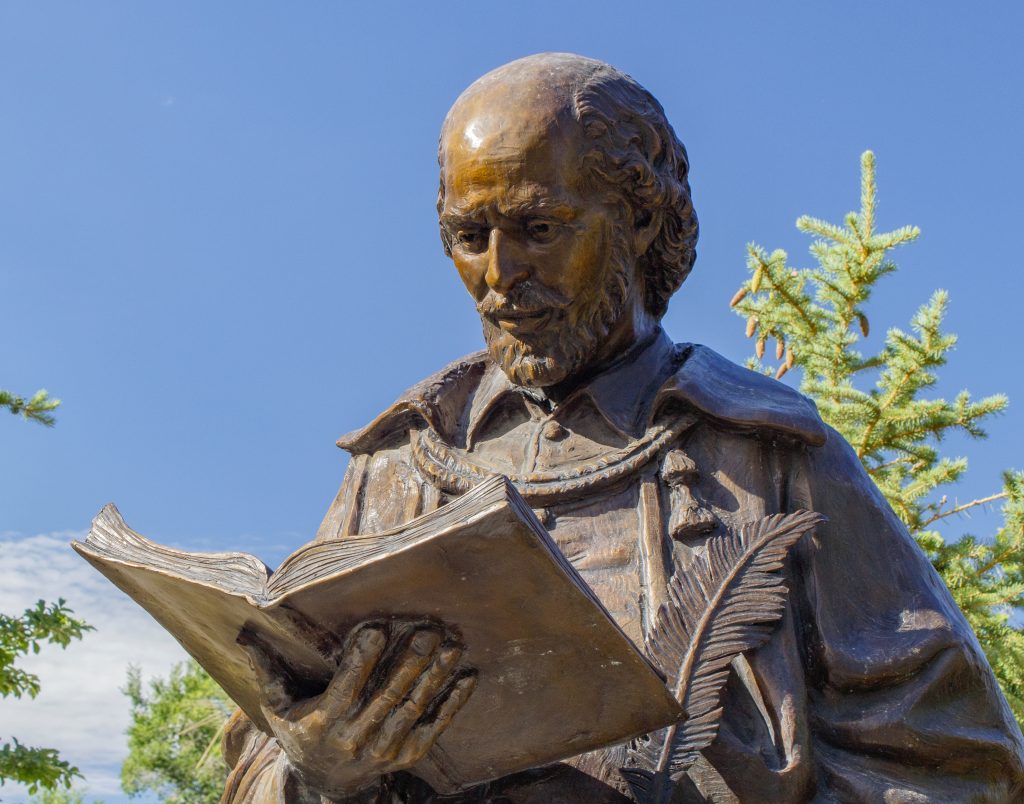
1 Shakespeare In Thought – From the First Folio
The first complete works of Shakespeare’s plays was printed in 1623 and is known today as the First Folio. The preface in that volume was written by another notable renaissance writer, one of Shakespeare’s contemporaries, Ben Jonson. Though Jonson’s introductory poem references a portrait of Shakespeare, it applies equally to us. Jonson advises readers of the First Folio, and modern viewers of this statue, that they will come to know Shakespeare best through his words rather than through his likeness. He wrote,
To the Reader:
This Figure, that thou here seest put,
It was for gentle Shakespeare cut:
Wherein the Graver had a strife
with Nature, to out-do the life:
O, could he but have drawn his wit
As well in phrase, as he hath hit
His face; the Print would then surpasse
All, that was ever in phrase.
But, since he cannot, Reader, look
Not on his picture, but his Book.
2 Shakespeare In Thought – Hidden Lines
Though unseen by viewers of this piece, the artist Stanley J. Watts chose to inscribe a message on the upturned page of Shakespeare’s open book. If you could climb up on the statue, which is not encouraged, you would see a short quote from his masterwork, The Tragedy of Hamlet. A short, often quoted line, not from the woeful Dane but from Polonius, chief counselor to King Claudius, who says in Act 1, Scene 3
This above all – to thine own self be true,
And it must follow, as the night the day,
Thou canst not then be false to any man.
This famous line has been quoted in many contexts and interpreted in countless ways. Is it a schemer’s advice to “protect your own interests?” Or is it a philosopher’s counsel to “follow your dreams?” Or something else? What is sure, is that Shakespeare’s artistry runs deep and in Hamlet’s words,… “there’s the rub.”
3 Shakespeare In Thought – Artist: Stanley J. Watts
This sculpture was created by nationally recognized artist Stanley J. Watts. After attending Utah State University for a year, Watts continued his training under the tutelage of noted Salt Lake City sculptor Dr. Avard Fairbanks. Watts is best known for his bronze sculptures celebrating famous figures in American history including one of George Washington located near the revolutionary encampment at Valley Forge and one of Abraham Lincoln near the Civil War battlefield in Gettysburg, Pennsylvania.
Mr Watts created several other characters in the Pedersen Shakespeare Character Garden some of them in cooperation with artist A. Clayton Robbins. If you would like to see an additional sculpture created by Watts not situated here, his whimsical statue of Titania from A Midsummer Night’s Dream is just a short walk away, standing at the west entrance to the Randall L Jones Theatre.
